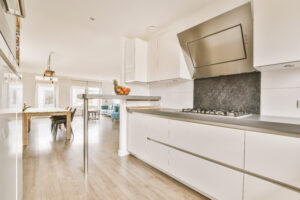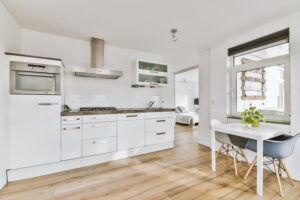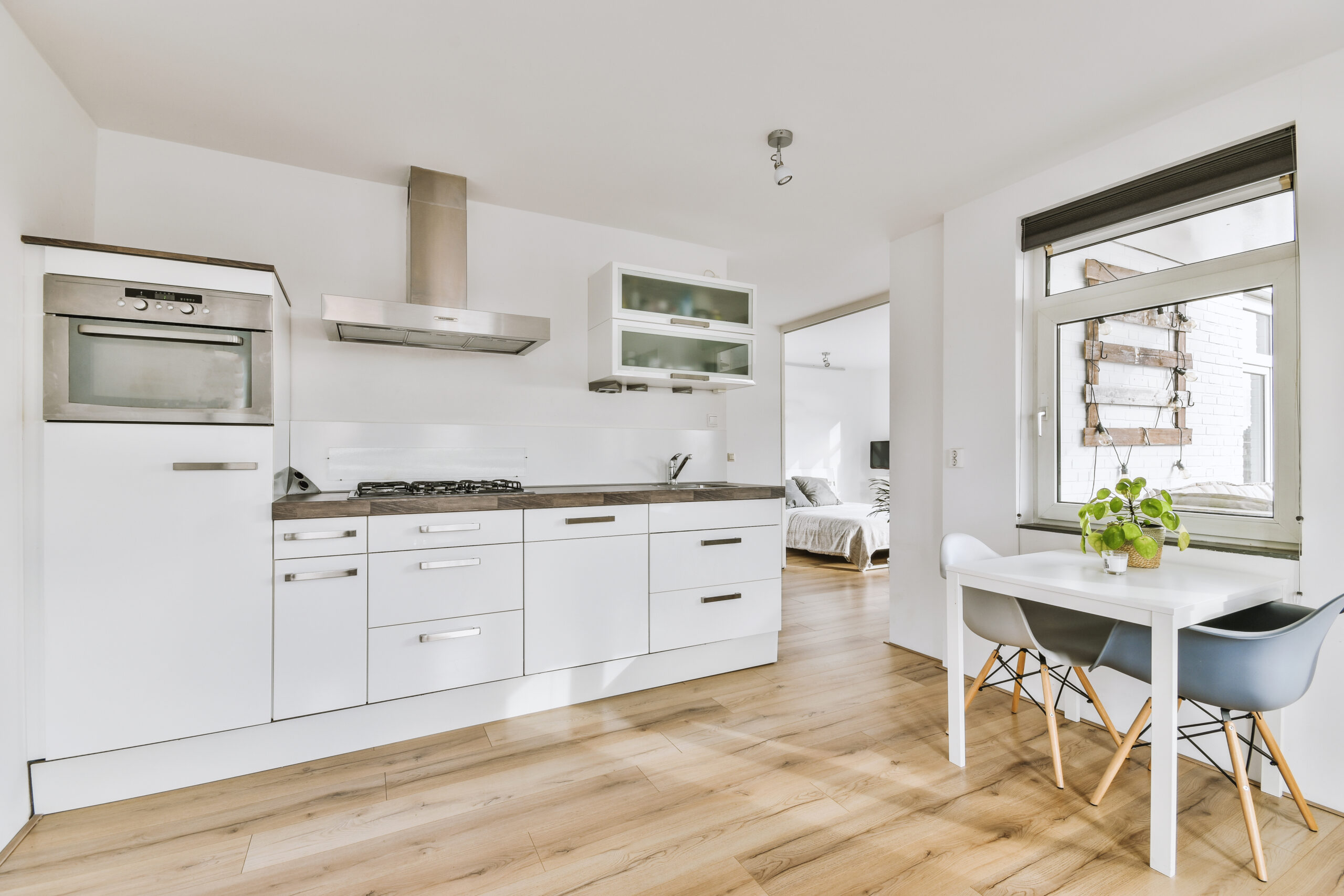Cabinets may seem like a design decision — but in reality, they’re a structural component of your kitchen. And when they’re not built properly, you’ll notice.
Doors sag. Drawers stick. Boxes warp. And before you know it, what looked good at install starts falling apart from the inside out.
I’ve seen it on countless job sites. The good news? These problems are avoidable — but only if you start with fine cabinetry built the right way. Let’s break it down.
🛠 Problem #1: Cabinets Warping or Swelling in High-Moisture Areas
Why it happens:
Most low-end cabinets use particleboard or MDF, which absorb moisture and swell over time — especially near sinks, dishwashers, or in humid climates.
Solution:
Choose fine cabinetry constructed with furniture-grade plywood boxes and moisture-resistant finishes. These materials resist warping and maintain structural integrity in kitchens, bathrooms, and laundry rooms.
✅ Look for brands like Dreamline Cabinetry, which use water-resistant plywood and conversion varnishes built to last.


🔧 Problem #2: Sagging Drawers or Weak Slides
Why it happens:
Inexpensive drawers are stapled together or made with thin sides and undersized glides. Over time, they bow and pull away from the box.
Solution:
Fine cabinetry uses solid hardwood drawer boxes with dovetail joints and full-extension, soft-close undermount slides rated for 75–100 lbs. This not only improves performance but increases usable space and lifespan.
✅ Inspect drawer slides before buying. If they rattle or resist when pulled — walk away.
🪵 Problem #3: Doors That Won’t Stay Aligned
Why it happens:
Poorly installed or cheaply made hinges wear out quickly or loosen over time, especially with frequent use.
Solution:
Look for adjustable soft-close hinges made of solid steel. These should allow micro-adjustments and offer reliable motion without slamming or shifting.
✅ Fine cabinetry brands typically use European-style concealed hinges with six-way adjustability — making realignment easy.
🧱 Problem #4: Inadequate Support During Installation
Why it happens:
Cabinets with thin backs (⅛” or less) use hanging rails or require extra blocking to mount securely. This creates issues with alignment and strength.
Solution:
Fine cabinetry features ⅝” to ¾” full plywood backs, allowing cabinets to be mounted directly to wall studs. This provides better load-bearing and faster, more secure installation.
✅ Contractors prefer full backs — it reduces failures during and after install.
📏 Problem #5: Poor Use of Space and Storage Inefficiency
Why it happens:
Mass-produced cabinets are limited in size options. Builders fill gaps with spacers, resulting in dead space and less functional storage.
Solution:
Fine cabinetry is made to order. You get exact sizing, custom pullouts, deep drawers, and inserts that make every inch count.
✅ Whether it’s a tray divider, spice pullout, or vertical storage, fine cabinetry turns wasted space into smart solutions.

🧠 So What Really Defines Fine Cabinetry?
| Feature | What to Look For |
|---|---|
| Box Material | ½”–¾” plywood (not particleboard) |
| Drawer Construction | Solid wood with dovetail joints |
| Hinges | Adjustable, soft-close, metal hinges |
| Finish | Multi-step catalyzed varnish or baked-on enamel |
| Customization | Flexible sizing, internal accessories, smart storage |
| Back Panels | Full plywood back panels (not rails or brackets) |
| Warranty | Limited lifetime preferred |
✅ How Fine Cabinetry Fixes the Root Problems
| Common Cabinet Problem | Fine Cabinetry Solution |
|---|---|
| Warping from moisture | Plywood boxes + moisture-resistant finishes |
| Sagging drawers | Solid wood + full-extension slides |
| Loose hinges | Soft-close, adjustable, steel hinges |
| Weak installation | Full back panels for better wall support |
| Wasted space | Custom sizes + storage inserts |
🔨 Final Takeaway: Do It Right, Not Twice
The difference between generic and fine cabinetry isn’t just aesthetic — it’s function, durability, and long-term value.
Cabinetry is one of the biggest investments in your home. Choose poorly, and you’ll pay for it — in repairs, replacements, and daily frustration.
Choose well, and you’ll have quiet, smooth, rock-solid cabinets that still look (and work) like new 10 or 20 years from now.
📢 Call to Action:
Looking for cabinets that actually solve problems — not create them?
Choose Dreamline Cabinetry, where fine craftsmanship meets moisture resistance, strength, and custom design you can rely on.

